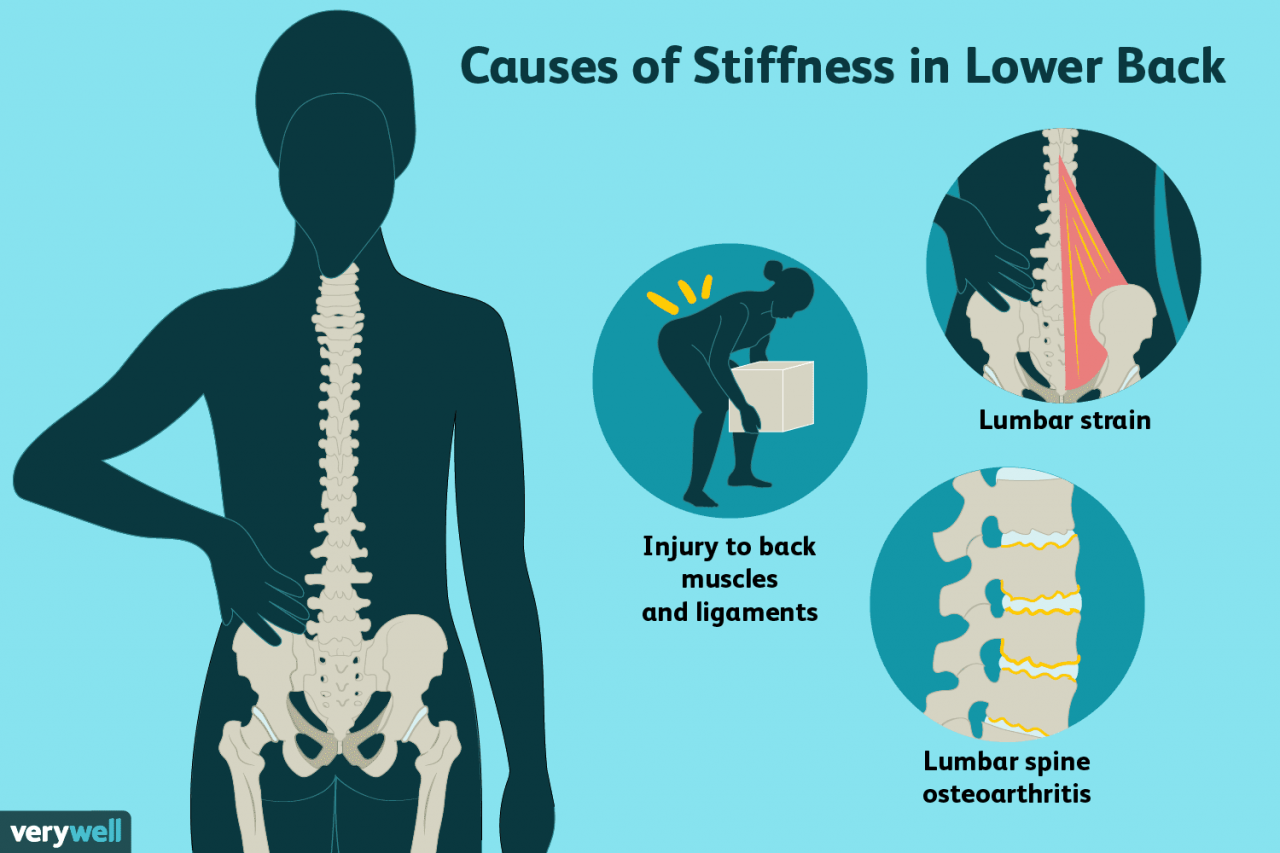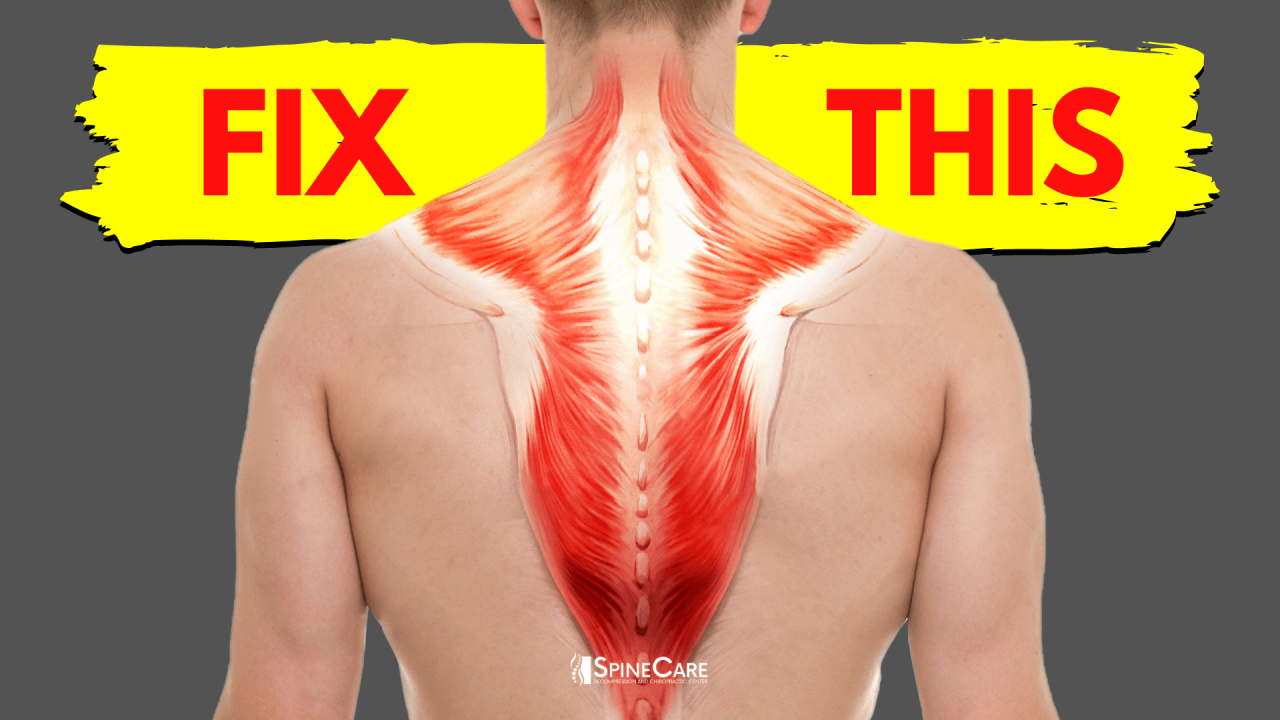
How can stiff and tight muscles result in back pain? This prevalent question has plagued individuals for ages, and understanding the intricate connection between muscular tension and spinal discomfort is crucial. Delve into this comprehensive exploration to unravel the mechanisms behind muscle stiffness and tightness, their impact on back pain, and effective treatment strategies.
Muscle stiffness, characterized by reduced range of motion and flexibility, often stems from inactivity, injuries, or the natural aging process. Tight muscles, on the other hand, exert excessive force on surrounding structures, potentially compressing nerves or blood vessels and triggering pain.
Understanding these underlying factors is essential for alleviating back pain and restoring optimal mobility.
How Can Stiff and Tight Muscles Result in Back Pain?

Stiff and tight muscles are common complaints that can significantly impact our daily lives. Back pain is one of the most prevalent musculoskeletal conditions, and stiff or tight muscles often play a contributing role. Understanding the relationship between muscle stiffness and tightness and back pain is crucial for effective management and prevention.
Celebrate the bond between mothers and daughters with heartfelt Mother’s Day greetings for your sister. Share beautiful images expressing your love and gratitude. Snoopy, the beloved beagle, also joins in the festivities with adorable Mother’s Day messages . For those wondering about acknowledging expecting mothers, etiquette dictates that it is appropriate to extend Mother’s Day wishes to them as well.
1. Muscular Structure and Stiffness
Muscles are composed of muscle fibers, connective tissue, and fascia. Muscle stiffness occurs when these components become less flexible and more resistant to movement. Inactivity, injury, or aging can all contribute to muscle stiffness.
- Inactivity:Prolonged periods of inactivity can lead to muscle atrophy and reduced flexibility, resulting in stiffness.
- Injury:Muscle injuries, such as strains or tears, can cause inflammation and scarring, leading to stiffness and reduced range of motion.
- Aging:As we age, our muscles naturally lose flexibility and strength, making them more prone to stiffness.
2. Muscle Tightness and Pain, How can stiff and tight muscles result in back pain?
Tight muscles can compress nerves or blood vessels, leading to pain. Common muscle groups that, when tight, can contribute to back pain include:
- Hamstrings:Tight hamstrings can pull on the pelvis, causing lower back pain.
- Hip flexors:Tight hip flexors can tilt the pelvis forward, putting pressure on the lower back.
- Gluteals:Weak or tight gluteal muscles can lead to instability and back pain.
- Erector spinae:Tight erector spinae muscles can cause stiffness and pain in the mid-back.
3. Stiffness and Tightness as Symptoms
Muscle stiffness and tightness can also be symptoms of underlying conditions, such as:
- Fibromyalgia:A chronic condition characterized by widespread muscle pain and stiffness.
- Arthritis:Inflammation of the joints can lead to muscle stiffness and pain.
- Spinal stenosis:Narrowing of the spinal canal can put pressure on nerves, causing muscle stiffness and pain.
4. Treatment Options
Various treatment options can alleviate back pain caused by stiff and tight muscles:
- Physical therapy:Physical therapists can provide exercises and manual therapy techniques to improve muscle flexibility and reduce pain.
- Massage:Massage can help relax tight muscles and improve blood flow.
- Stretching exercises:Regular stretching can help maintain muscle flexibility and prevent stiffness.
- Medication:In some cases, pain relievers or muscle relaxants may be prescribed to manage pain and stiffness.
It’s important to consult a healthcare professional for proper diagnosis and guidance on the most appropriate treatment options for your specific condition.
Last Recap

In conclusion, stiff and tight muscles can significantly contribute to back pain, emphasizing the importance of maintaining muscle health. Regular stretching, massage therapy, and physical therapy can effectively reduce muscle tension and alleviate pain. Consulting a healthcare professional for proper diagnosis and personalized treatment is always advisable to address underlying medical conditions that may be causing muscle stiffness and tightness.
Clarifying Questions: How Can Stiff And Tight Muscles Result In Back Pain?
Can muscle stiffness and tightness be prevented?
Regular stretching, maintaining a healthy weight, and engaging in regular physical activity can help prevent muscle stiffness and tightness.
What are the common symptoms of muscle stiffness and tightness?
Reduced range of motion, pain, and discomfort are common symptoms of muscle stiffness and tightness.
As Mother’s Day approaches, a question that often arises is whether it’s appropriate to extend do you say happy mother’s day to a pregnant woman . While there’s no definitive answer, many believe that acknowledging the special role pregnant women play in the journey of motherhood is a kind and thoughtful gesture.
Whether you choose to say do you say happy mother’s day to a pregnant woman or simply express your appreciation for her, it’s important to show your support and love.
How long does it take for muscle stiffness and tightness to improve?
The time frame for improvement varies depending on the severity of the condition and the effectiveness of the treatment plan.
Celebrate the special bond between mothers and children this Mother’s Day with heartwarming wishes and thoughtful gifts. Express your love and gratitude with happy mother’s day sis messages that convey your deepest feelings. Browse a collection of happy mothers day wishes for all moms images to find the perfect image to accompany your message.
Whether it’s a cute snoopy happy mother’s day image or a heartfelt quote, there’s something for every mom.







